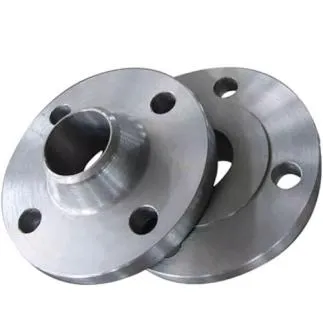-
Cangzhou Yulong Steel Co., Ltd.
-
Phone:
+86 13303177267 -
Email:
admin@ylsteelfittings.com
- English
- Arabic
- Italian
- Spanish
- Portuguese
- German
- kazakh
- Persian
- Greek
- French
- Russian
- Polish
- Thai
- Indonesian
- Vietnamese
- Zulu
- Korean
- Uzbek
- Hindi
- Serbian
- Malay
- Ukrainian
- Gujarati
- Haitian Creole
- hausa
- hawaiian
- Hebrew
- Miao
- Hungarian
- Icelandic
- igbo
- irish
- Japanese
- Javanese
- Kannada
- Khmer
- Rwandese
- Afrikaans
- Albanian
- Amharic
- Armenian
- Azerbaijani
- Basque
- Belarusian
- Bengali
- Bosnian
- Bulgarian
- Catalan
- Cebuano
- China
- China (Taiwan)
- Corsican
- Croatian
- Czech
- Danish
- Esperanto
- Estonian
- Finnish
- Frisian
- Galician
- Georgian
- Kurdish
- Kyrgyz
- Lao
- Latin
- Latvian
- Lithuanian
- Luxembourgish
- Macedonian
- Malgashi
- Malayalam
- Maltese
- Maori
- Marathi
- Mongolian
- Myanmar
- Nepali
- Norwegian
- Norwegian
- Occitan
- Pashto
- Dutch
- Punjabi
- Romanian
- Samoan
- Scottish Gaelic
- Sesotho
- Shona
- Sindhi
- Sinhala
- Slovak
- Slovenian
- Somali
- Sundanese
- Swahili
- Swedish
- Tagalog
- Tajik
- Tamil
- Tatar
- Telugu
- Turkish
- Turkmen
- Urdu
- Uighur
- Welsh
- Bantu
- Yiddish
- Yoruba

Nov . 11, 2024 09:21 Back to list
steel welded pipe
Understanding Steel Welded Pipes A Comprehensive Overview
Steel welded pipes are essential components in various industries, including construction, oil and gas, water transportation, and manufacturing. Their strength, durability, and versatility make them a popular choice for transporting fluids and gases under pressure, supporting structures, and much more. This article delves into the characteristics, manufacturing processes, applications, and advantages of steel welded pipes.
Characteristics of Steel Welded Pipes
Steel welded pipes are made from steel sheets or plates that are rolled into cylindrical shapes and joined together through welding. They come in various grades and specifications, depending on their intended use. Common materials include carbon steel, stainless steel, and alloy steel, each offering unique properties
1. Carbon Steel Known for its high strength and relatively low cost, carbon steel pipes are widely used in construction and structural applications. 2. Stainless Steel This type is resistant to corrosion and oxidation, making it suitable for harsh environments, including chemical processing and food production. 3. Alloy Steel Alloy steels are used for high-stress applications due to their enhanced mechanical properties.
Welded pipes can also be produced in various sizes, from small diameters for plumbing applications to large diameters for industrial purposes. The wall thickness and surface finish can also vary according to specific requirements.
Manufacturing Process
The manufacturing of steel welded pipes involves several key steps
1. Plate Preparation The process begins with cutting steel sheets or plates to the required length. 2. Forming The flat plates are then rolled into a cylindrical shape using machines. 3. Welding The edges of the rolled plates are welded together. This can be done through several methods, including - Electric Resistance Welding (ERW) Uses electrical resistance to create heat at the weld joint, causing the edges to melt and fuse together. - Submerged Arc Welding (SAW) Involves a consumable electrode that is submerged in flux, protecting the weld from contamination. 4. Testing and Inspection The welded pipes undergo rigorous testing to ensure they meet quality standards. Common tests include hydrostatic tests, ultrasonic tests, and visual inspections. 5. Finishing Finally, the pipes may receive surface treatments, such as coating or painting, to enhance their resistance to corrosion and improve their aesthetic appearance.
steel welded pipe

Applications of Steel Welded Pipes
Steel welded pipes have a broad range of applications across multiple sectors
- Construction Used for structural frameworks, scaffolding, and piling. - Oil and Gas Essential for transporting crude oil, natural gas, and other hydrocarbons. - Water Supply Commonly used in municipal water lines and irrigation systems. - Manufacturing Widely used in producing machinery, furniture, and various products.
Their versatility allows these pipes to be adapted for both indoor and outdoor applications, making them a staple in modern infrastructure.
Advantages of Steel Welded Pipes
The popularity of steel welded pipes can be attributed to several advantages
1. Cost-Effectiveness Compared to seamless pipes, welded pipes are generally less expensive to produce and can help reduce overall project costs. 2. Strength and Durability Steel pipes exhibit excellent mechanical properties, allowing them to withstand high pressures and harsh environments. 3. Customizability The production process allows for various sizes, wall thicknesses, and coatings, enabling manufacturers to tailor pipes to specific project requirements. 4. Ease of Installation Welded pipes can be fabricated in large lengths, reducing the number of joints needed in a pipeline, thus simplifying the installation process.
Conclusion
Steel welded pipes are integral to various industries due to their strength, durability, and adaptability. Understanding their characteristics, manufacturing processes, and applications highlights their critical role in modern infrastructure. As industries evolve, the demand for advanced steel welded pipe technologies will likely continue to grow, further enhancing their applications and efficiencies. Whether it’s for structural support, fluid transport, or any number of applications, steel welded pipes will remain a fundamental element of engineering and construction.
Latest news
-
ANSI 150P SS304 SO FLANGE
NewsFeb.14,2025
-
ASTM A333GR6 STEEL PIPE
NewsJan.20,2025
-
ANSI B16.5 WELDING NECK FLANGE
NewsJan.15,2026
-
ANSI B16.5 SLIP-ON FLANGE
NewsApr.19,2024
-
SABS 1123 FLANGE
NewsJan.15,2025
-
DIN86044 PLATE FLANGE
NewsApr.19,2024
-
DIN2527 BLIND FLANGE
NewsApr.12,2024
-
JIS B2311 Butt-Welding Fittings LR/SR 45°/90° /180°Seamless/Weld
NewsApr.23,2024











